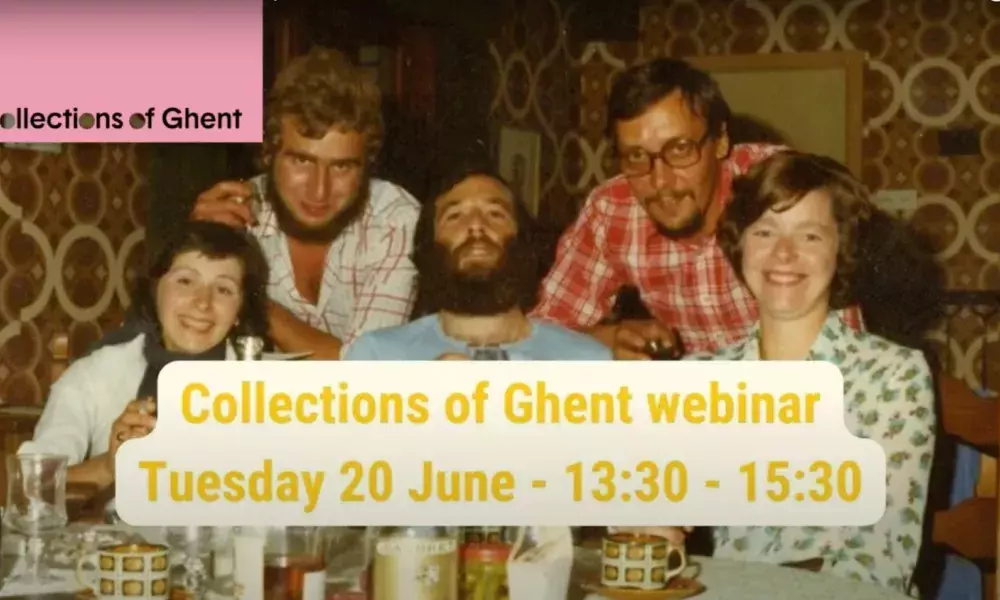
An innovation project is an attempt to change a reality. It tries to answer some questions that motivate the innovation process and by doing so, it triggers new questions. The concluding CoGhent Festival that took place in June 2023, was the occasion for all stakeholders to look back and take stock of all these questions, the answers given, and the emerging interrogations emerged.
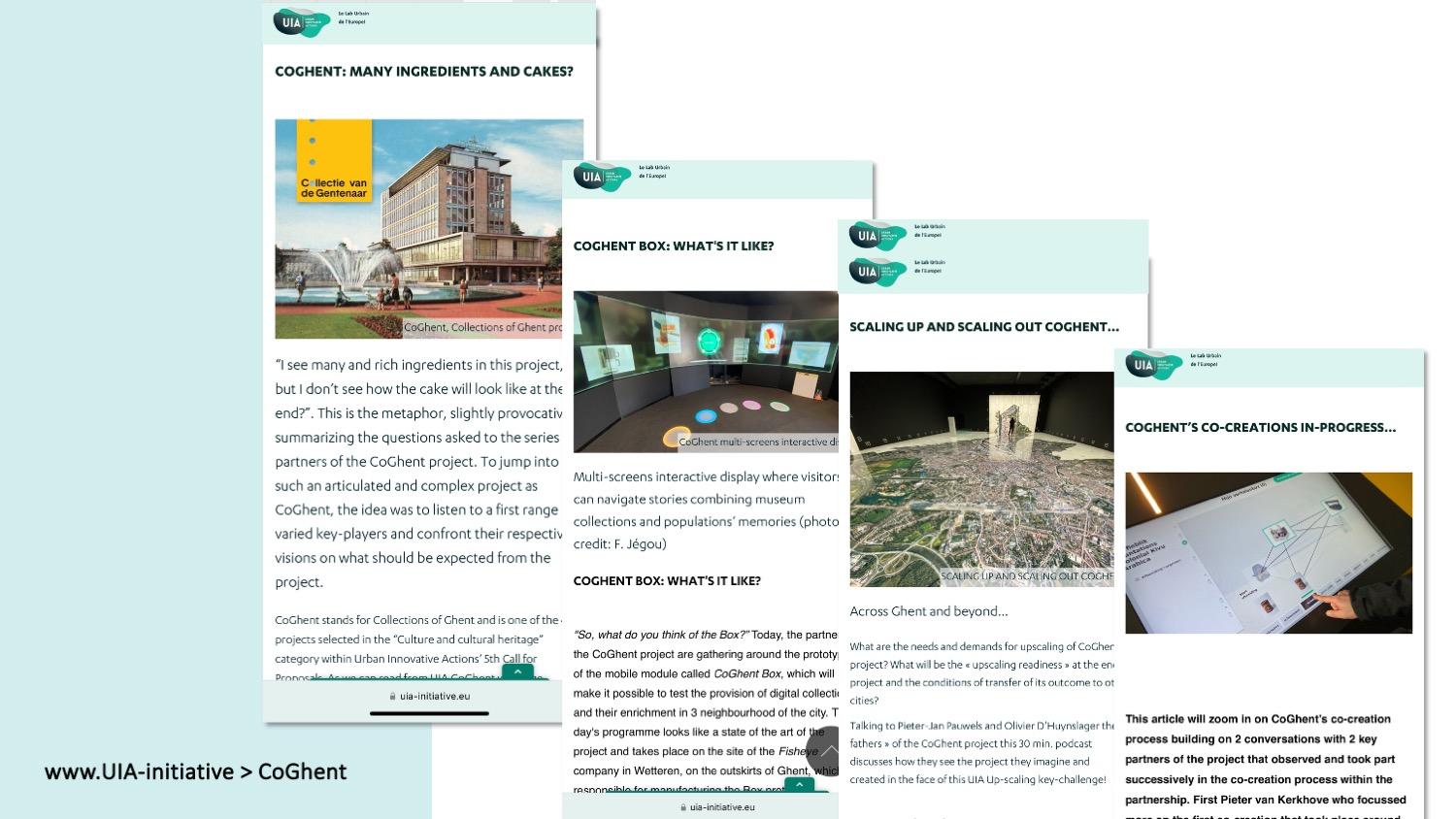
Selection of articles published along the CoGhent project on the UIA website https://www.uia-initiative.eu/en/uia-cities/ghent-0 (photo credit: F. Jégou)
The purpose of this Web Article is to browse some of the on-going discussions raised by CoGhent in the different articles published on UIA website along the 3 years project implementation process and point some questions still open for debate… Far away from any pretention of conclusion, the intention is, as a critical friend, to feed the rich conversations opened by CoGhent, the intuitions of its ideators and the intense work of all their partners.
COGHENT, MANY INGREDIENTS AND CAKES?
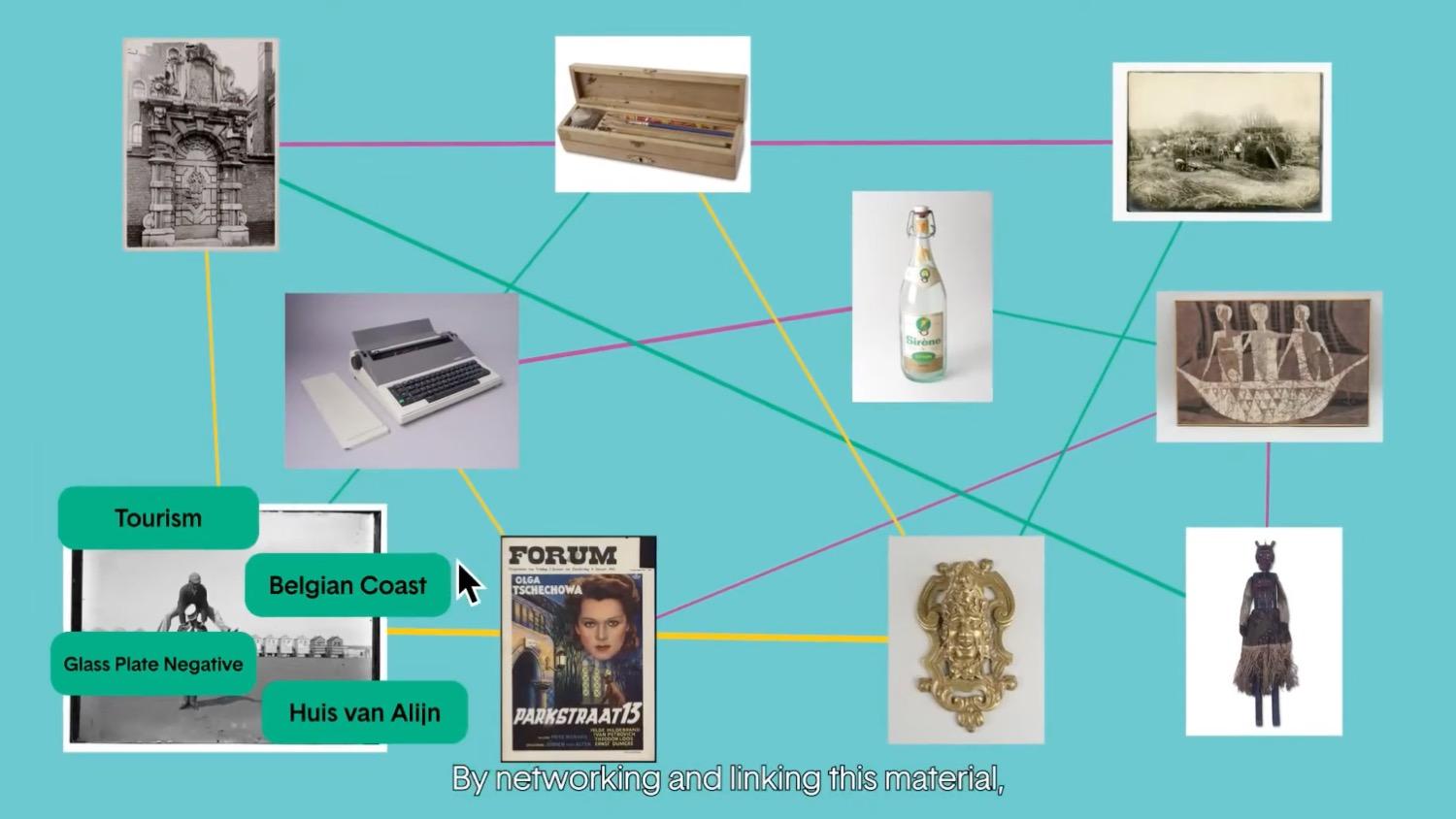
Illustration showing links between different cultural data enabled by CoGhent technological infrastructure (photo credit: Collections of Ghent promotion moviehttps://www.youtube.com/watch?v=TdfsnlRBJSY)
CoGhent appears from the beginning as a complex attempt to catch multiple cultural, social and technological interwoven objectives. A first article was questioning “CoGhent many ingredients and cakes?” the project was aiming at? In particular, it raised the question of the cooperation within the project: either an aggregation of many different players converging into one shared goal or an opportunity for multiple stakeholders to collaborate and bilaterally achieve a range of complementary or separated objectives.
The impact analysis, conducted by the UGent IMEC University presents the project as a whole including all the technology developed (i.e. digitisation of the city cultural data, linked data event. stream technology making them available to third parties for reuse…) experimented in the Box on the one hand and, the socio-cultural activation (i.e. the memories collections process in the neighbourhoods, the co-construction of local collective stories, the action of social workers, volunteers and NGOs around the Box engaging citizens…) to enhance local social cohesion on the other hand.
On the contrary, distinguishing them raises interesting questions to discuss such as:
- How did the technology developed support the work of social engagement?
- Is the social cohesion impact of the project, more due to the technology developed or to the socio-cultural activation?
- Where is the core innovation of CoGhent, taking into account that the city of Ghent is already world-famous for the quality of participation…?
THE COGHENT BOX, A MINI-MUSEUM IN THE NEIGHBOURHOOD…
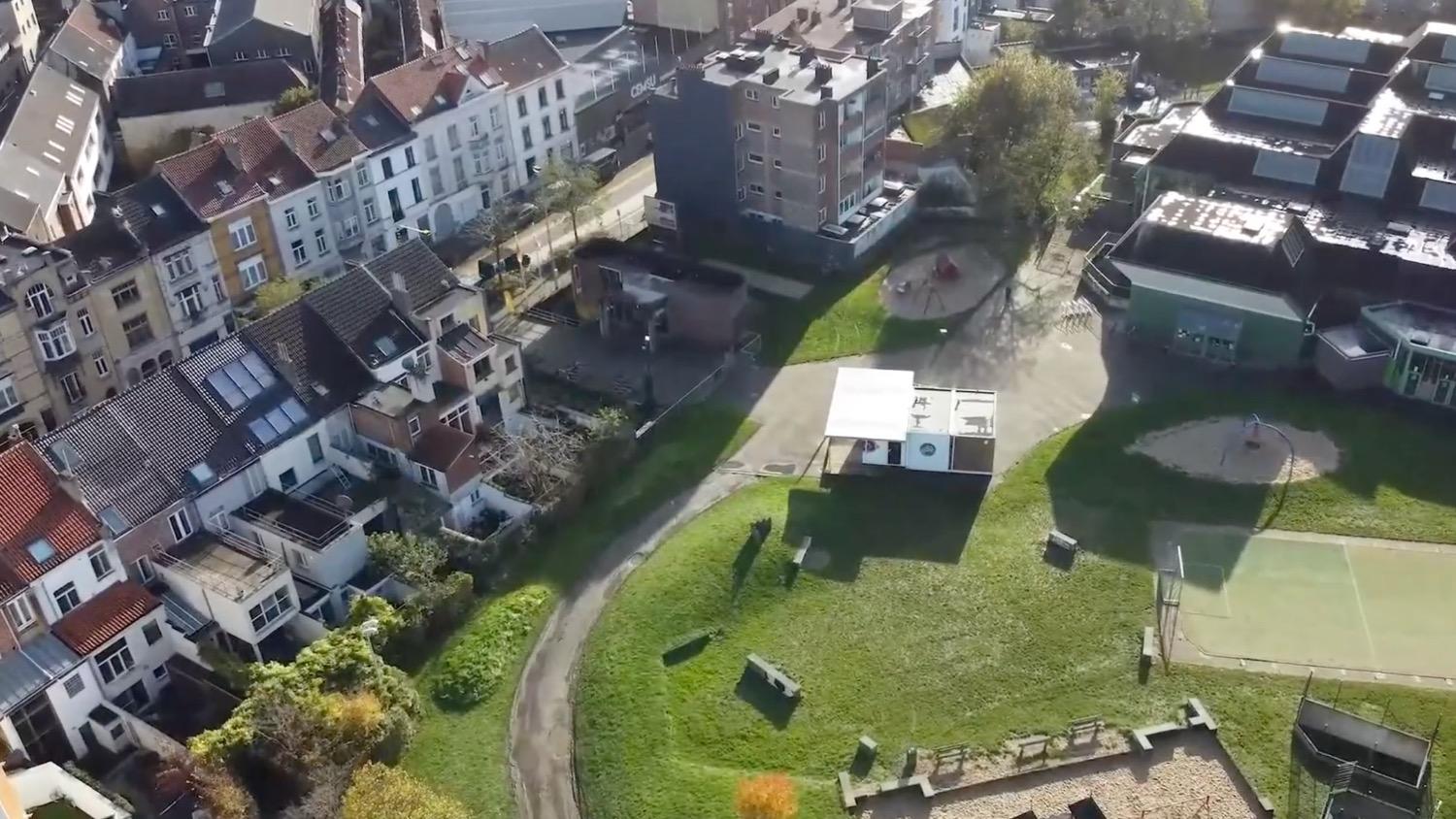
CoGhent Box testing interactions between digitised cultural heritage collections and the population in the Sluizeken-Tolhuis-Ham neighbourhood of Ghent (photo credit: Collections of Ghent promotion movie https://www.youtube.com/watch?v=TdfsnlRBJSY)
Spending one day around the CoGhent Box in Watersportbaan, one of the 3 Ghent’s neighbourhoods where it was tested, interviewing all the stakeholders there, social workers, volunteers, projects partners, visitors from different ages, observing how they move around the digital displays in the Box and the different events outside… gave in-sights on how was this outstanding completely new object was perceived: The COGhent box is a mini-museum in the neighbourhood… video edited from this day of interviews and observations tends to show how this “boundary object”, as Bas Baccarne from UGent IMEC University define it, is assuming different meaning for the different populations at stake (inhabitants, cultural institutions, tech developers, social services…) is finally reinterpreted as a “mini-museum”, a sample reaching out in the peripheric neighbourhoods to give a taste of the city’s main cultural institutions.
Without exaggerating the importance of this interpretation, it raises interesting questions such as:
- CoGhent is a huge effort to open and free the collections out of museums so why putting them into a box?
- Is the design process that lead to the definition of this solutions and shape (i.e. the design consultation organised among design students and professionals, the project sketched by Design Dott and the prototype build by FishEye project partners…) a bottom-up process (i.e. starting from users investigations and usage-driven projections…) or a top-down approach (i.e. following the implicit brief from the cultural institutions partners, considering the physical constraints of the technology that had to be packaged, protected, displayed…) ?
- Should an opening process of museums and archive lead to an “inside” or as for instance as Mattias Laga, one of the social workers involved with the project is suggesting in the video, to an “outside”, a mobile vehicle, a flexible tablet… an agile tool for social engagement”?
SCALING UP AND SCALING OUT COGHENT...
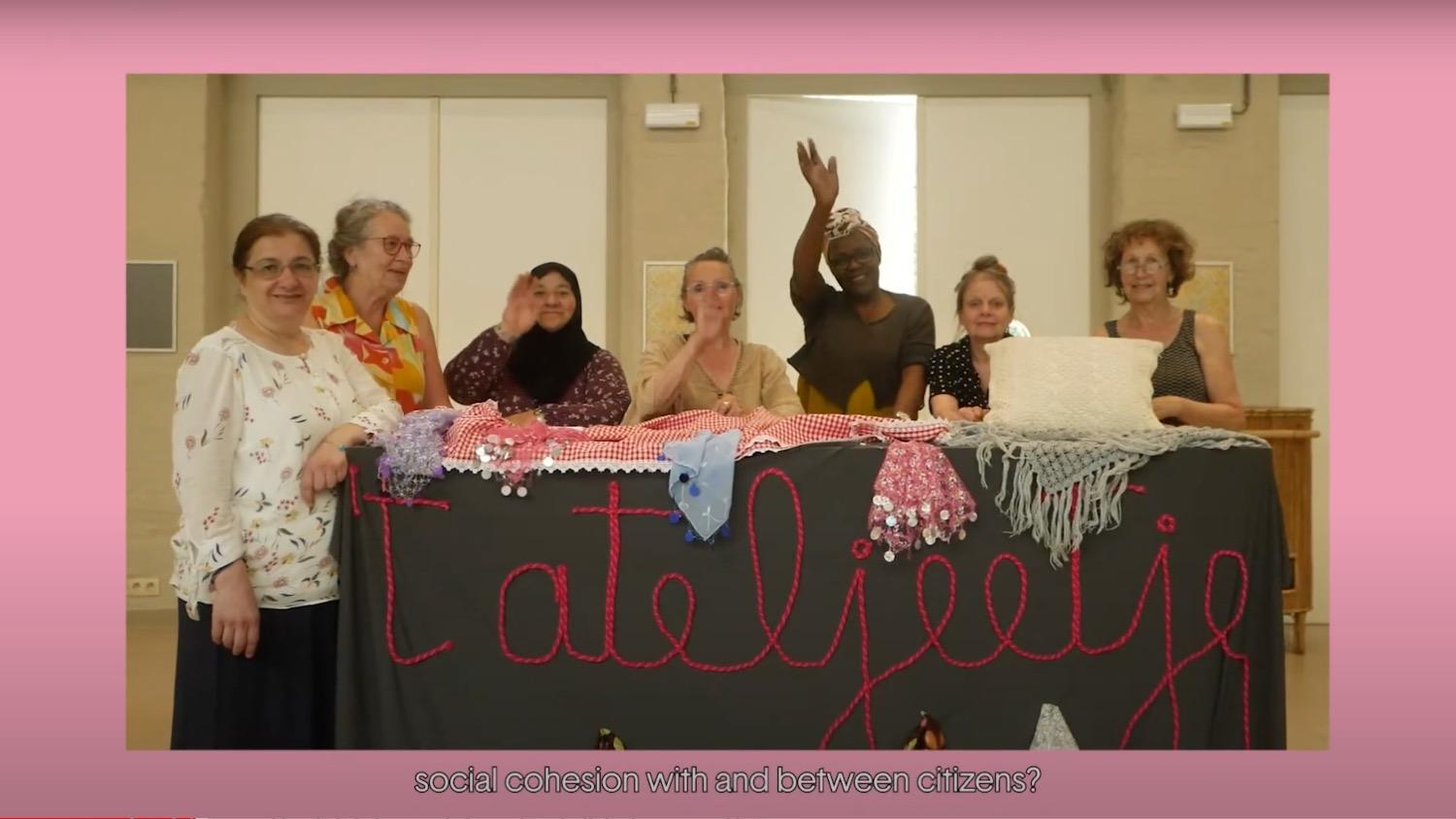
Example of activity organised with the local population picturing the multicultural social cohesion goal of CoGhent project (photo credit: Collections of Ghent promotion movie https://www.youtube.com/watch?v=TdfsnlRBJSY)
UIA identified 7 challenges that UIA’s innovation projects often meet including the issue of upscaling. In the case of CoGhent this challenge translates in the Scaling up and scaling out CoGhent article questioning how the model developed by this UIA project may grow at national and European level and spread the idea of opening of cultural data in order to enhance social cohesion on the territory?
Christine Deweerdt, Director of STAM, Ghent city museum interviewed at the beginning of the project was saying: “[…] our collections are rich of the Belgium culture, but what about Turkish, Bulgarian and all other cultures that made what Ghent is today?” This project of constituting a “6th collection”, a cultural heritage collection that would come from the bottom is key in CoGhent to ensure a fair and balanced integration of all populations as recognized stakeholders of the city and effectively enhance social cohesion.
As David Slosse from the Policy Participation Department at City of Ghent, commented: “We had to organise a lot of activities to attract people to the box and invite them to go inside […] and 3 months is very short to settle in a neighbourhood location and attract inhabitants’ interest!”. Nevertheless, the experiments made along the project and their impact assessment pointed that neighbourhood inhabitants do see an interest in multicultural heritage that bring more connectivity between them, interactions across communities, belonging to the territory, etc. and confirm CoGhent’s courageous hypothesis on such a sensitive topic as social cohesion now in Belgium, in Europe and beyond.
After the round of bottom-up collection of multicultural heritage in 3 popular off-centre neighbourhoods of the city, the project foresees to dismantle the mobile CoGhent Box and settle definitively all memory collection and storytelling technological infrastructure developed fixed in the Design Museum Ghent.
This choice for the follow-up of the project raises interesting questions:
- Why this CoGhent huge effort of cultural institutions to reach out to citizens in the different neighbourhoods where they live, is going back to a cultural institution in the city centre?
- Does the choice of settling in the Design Museum and not in the City Museum mean that CoGhent will be presented as testimony of a past “experimental environment” as Bas Baccarne defines it, instead of an active tool for city cohesion?
- Are classical museum institutions and digital museum platforms online enough to “give back” to the citizens the memories and stories that have been captured from them?
In 2016, Els Lecomte, former Head of Policy participation in Ghent was reminding that in Ghent “participation is not to raise citizens’ interest to what the city is doing but to raise city’s interest in what citizens are doing…”[1]. Her thoughts are questioning directly how CoGhent's impact on social cohesion may scale-out to cultural heritage institutions and scale-up in Belgium, Europe and beyond…
COGHENT NIGHTMARE, AN EXERCISE OF EVIL CREATIVITY!
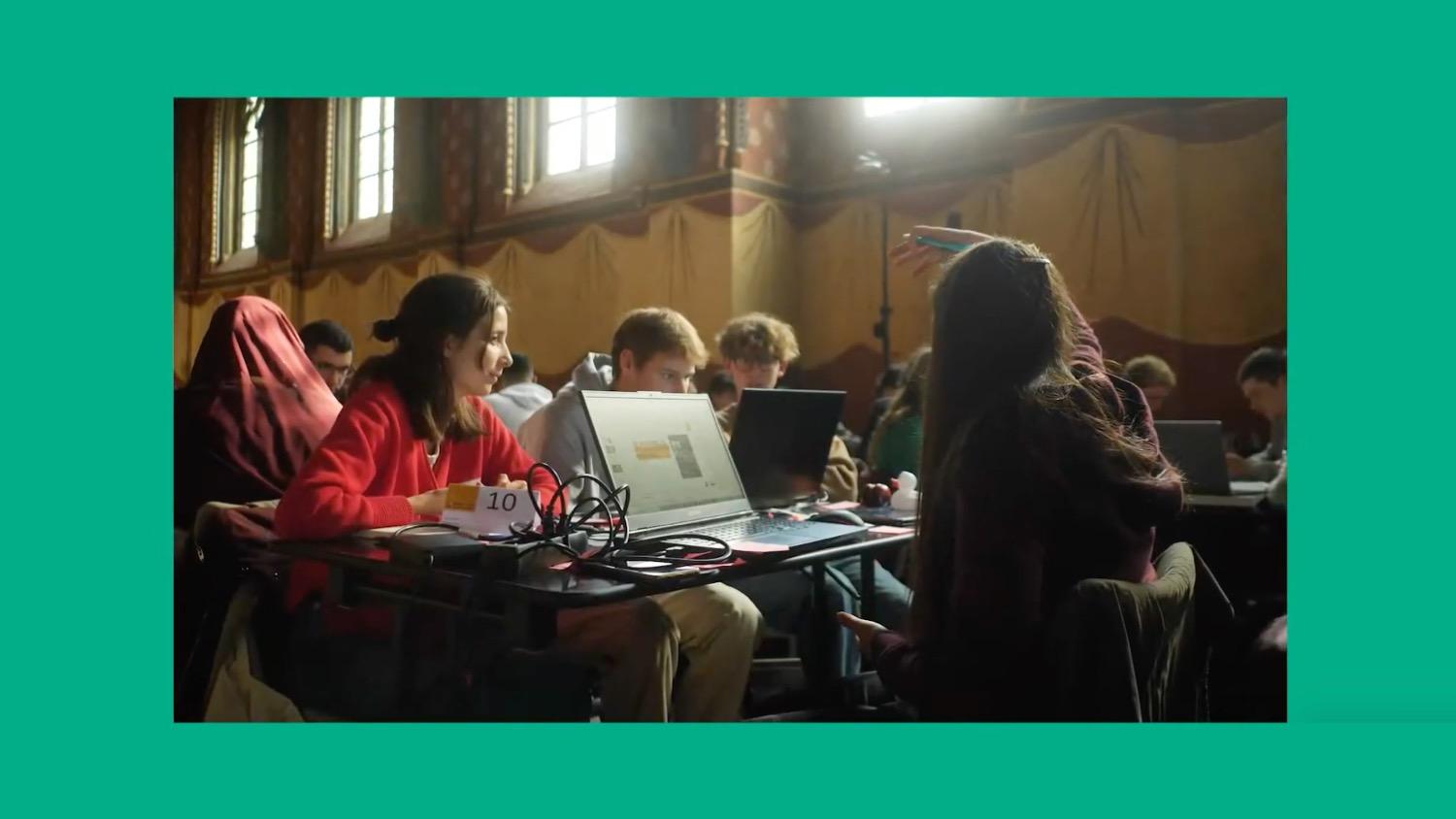
Hackathon organized with students and professionals to experiment reuse of cultural data set made available by the CoGhent infrastructure (photo credit: Collections of Ghent promotion movie https://www.youtube.com/watch?v=TdfsnlRBJSY)
At the beginning of the project a range of interviews proposed to various project’s partners a projective exercise asking them what they thought may go wrong in the development of the project and captured their various answers in an article titled CoGhent nightmare, an exercise of evil creativity!? Among the latent worries and potential issues of CoGhent, the effective reuse of cultural data emerged as one of the important concerns: will the opening of cultural data in a digitised form trigger the interest of third parties bringing to interesting recombinations and new applications?
The Co-Creation Fund call for creative reuse of open cultural data was launched halfway of the project when a large enough cultural data set and the technical infrastructure to reuse it were made available. 13 projects of reuse emerged from the Co-creation Fund: 8 in the creative category and 5 the technical one. This 2nd generation of creative reuse, beyond the CoGhent Box first batch of experimentations raises another series of interesting questions for the project:
- What does these 15 applications indicate in terms of reuse of cultural data and which trends and analysis could be inferred from this even very small first sample of applications?
- What’s beyond these “techy creative apps” as Sam Donvil, from meemoo, the Flemish Centre for the Archive and lead of the Co-Creation Fund process analysed them?
- Why “creative projects” and “technological projects” were settled as the 2 categories of the Co-creation Fund first experimental edition and a third category of “social cohesion” was not?
- What meaningful emerged for CoGhent’s societal scope as for instance the “Collage van Gent” proposal to realise a participative collage from the elements isolated from the collections, producing a good picture of what could be a “collective memory” certainly tapping into CoGhent’s social cohesion goal?
NEXT COGHENT…

« Collage van Gent - Ctrl Alt vzw » project selected by the CoGhent Co-creation Fund proposing a participatory collage of elements coming from Ghent’s collections (photo credit: François Jégou)
CoGhent is an innovation project with a scope of experimenting and opening new opportunities. It should be considered and assessed for “opening wider doors, as a conversation starter…” as Olivier van D’huynslager, ideator of CoGhent with Pieter-Jan Pauwels, see it.
CoGhent reached an important stage of development raising a new range of questions:
- What’s next?
- How to ensure the sustainability of the project?
- What are the future visions that the CoGhent infrastructure and experimentations are enabling and suggesting?
- What’s more could be done if all Ghent heritage images will be made accessible as linked data?
As one more door-opening process, NEXT-COGHENT, a projective “design fiction” exercise will be organised in September 2023 to enhance the perspectives induced by the project and the joint stakeholders’ effort made. It will also allow a co-creation process between the different players of CoGhent (re)mixing participation, heritage and tech and co-produce a series of medium-long terms visual scenarios enabled by CoGhent in a horizon of time of 15-20 years. The challenge is to push one step more the perspective of upscaling of CoGhent and trigger interests to support further developments at European and International level.
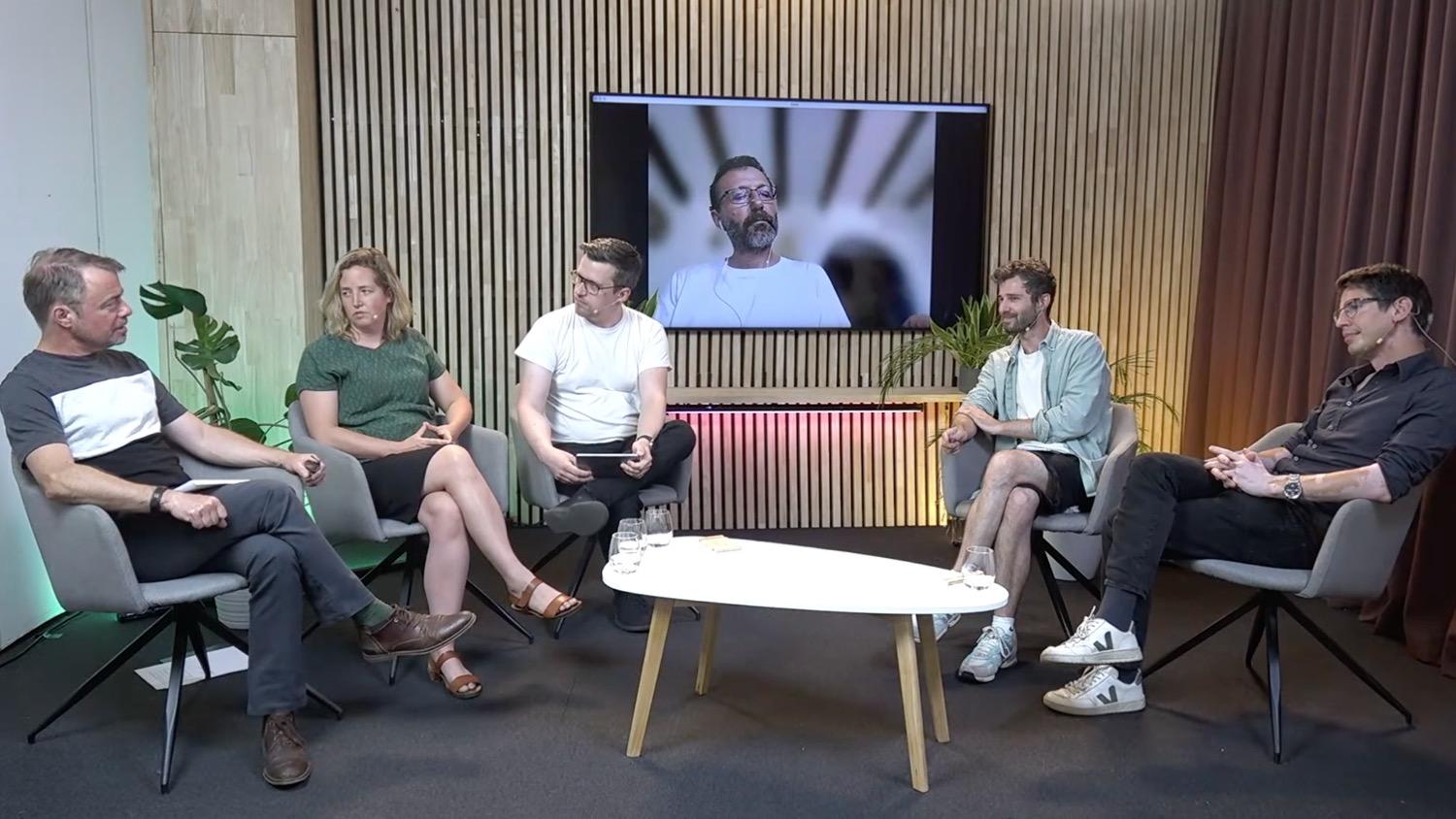
Panel discussion of the Collection of Ghent webinar the 20th of June 2023 https://www.collectie.gent/kalender/collections-of-ghent-unfolds-webinar-english (photo credit: Collections of Ghent website)
[1] 16th of February 2016, REFILL The City URBACT Action Planning Network conference in Ghent.
About this resource
The Urban Innovative Actions (UIA) is a European Union initiative that provided funding to urban areas across Europe to test new and unproven solutions to urban challenges. The initiative had a total ERDF budget of €372 million for 2014-2020.
Similar content




